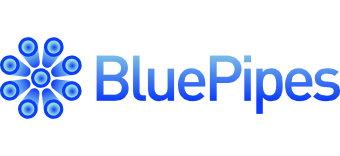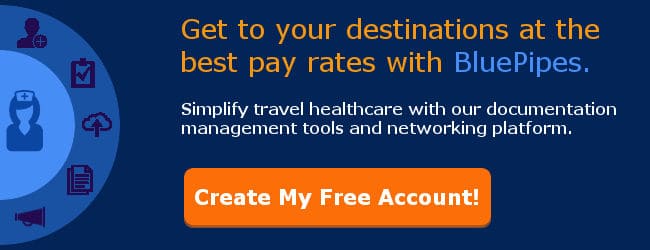What Travel Nurses Should Know About Agency Applicant Tracking Systems
Completing travel nursing company online applications and skills checklists are status-quo steps in the application process for travel nursing candidates. Many candidates maybe unaware that these online features are often components of elaborate Applicant Tracking Systems (ATSs). In this blog post, we’ll offer some insight into agency ATSs so that travel nurses have a better understanding of what’s going on behind the scenes. We’ll also offer some strategies for avoiding this cumbersome process.
What are Travel Nursing Applicant Tracking Systems?
ATSs are software systems designed to simplify the recruitment, onboarding, and human resource processes by providing greater efficiency and “trackability” than traditional methods. Each candidate has a unique electronic file within the system. Each electronic file connects with the various components of the software package so that everything is conveniently centralized.
Almost every travel healthcare agency uses some form of ATS. Some agencies have developed their own internal systems which tend to be fairly rudimentary. Some agencies enlist the services of an ATS software company. Some of these companies specialize in providing products for the supplemental staffing industry.
Travel healthcare ATSs provide features that assist with the unique circumstances faced by travel healthcare agencies and are capable of handling everything from the application process to the payroll process. The two most common ATSs in the travel healthcare industry are API and BlueSky. While there are certainly differences between the two, they are quite similar.
You’ll know which one you’re logging into when you click on the Apply link on agency websites. You’ll typically notice that the URL changes to “.apihealthcare.com” or “.blueskymss.com”. Some agencies purchase unique URLs, but the look of the modules remains the same.
Your travel nursing agency ATS profile
When you complete an online application with a agency, you are essentially creating your electronic file with that agency. With more advanced systems like API and BlueSky, you’ll be able to create a user name and password that will allow you to log into your profile, make changes and additions, and perform other functions. Of course, all of the data you enter is stored in the software’s database within your unique electronic file.
Once you have created your file, it is available on the software’s back-end system where it can be accessed by the agency’s employees. For example, recruiters are able to call up your file and make changes or additions where necessary and upload documents to your file such as copies of your licenses and certifications.
Agencies are also able to create candidate files on their own. Typically, there are two ways they can do this. First, they could do it through the front-end system. For example, a recruiter could go to the agency’s website and go through the application process instead of having the candidate do it on their own. This is why you will often find recruiters who offer to complete the application for the you over the phone. Essentially, the recruiter is completing the same application process as the nurse would be otherwise.
Second, the agency can create the file on the back-end. Agencies often do this when they obtain a large number of leads from a lead generator like RNVIP or TravelNurseSource. The agency will electronically transfer all the data onto the back-end in one swoop. Bear in mind, these are candidates whom the agency has most likely never spoken with. They’re potential leads. If somehow one of these candidates creates an account on the system’s front-end, the system will match the candidate’s file to potential matches on the back-end so that the agency can resolve duplicates.
Clients, Rate Management, and Job Orders in the travel nursing ATS
The agency’s client hospitals and potential client hospitals also have their own electronic files. These files are typically created by the agency on the back-end as there is no front end mechanism for clients to be entered into the system. Client electronic files typically include contact information, bill rates, billing information, and other applicable details.
Once a client file is properly created, agencies are able to add job orders for the client into the applicant tracking system. For example, the agency will select an option to add a new job order, select the appropriate client for the order, select the shift, the specialty, the start date, and the end date, and finally select an option to create the order. The job order is assigned an order number as a unique identifier. Some agencies have electronic systems that interface with the ATS to automatically perform the order entry process based on reports they receive from their clients.
Once the job order is entered, the recruiter can use the ATS’s “Rate Sheet” feature to calculate rates for the job. Rate sheets are attached to the job order and have a feature that pulls in all of the applicable data from the client’s file including the bill rate, billing fees, non-billable orientation fees, FICA, state taxes and fees, liability insurance costs and any other fee associated with the client’s file.
The rate sheet also has fields for the recruiter to enter all the compensation components of the pay package. The recruiter will enter an hourly taxable rate, a lodging stipend or the cost of company provided lodging, the M&IE stipend and all the other compensation variables.
The rate sheet is also capable of calculating the gross revenue and gross profit for the contract. As the recruiter adds more money to the compensation and cost variables, the gross profit drops and vice-versa. So the recruiter is able to use the rate sheet’s gross profit calculations to finagle the numbers in order to arrive at the rate for the assignment. In some agencies, the rates maybe set by someone other than the recruiter, but the process is the same.
The travel nursing submission process in the ATS
When the nurse agrees to be submitted to an assignment, the recruiter will select an option on the job order to submit a candidate. The system provides an interface for the recruiter to find and select the appropriate candidate from their database.
Once the candidate is selected, the system provides an interface for the recruiter to select the documents that will be included in the candidate’s submission profile. Typically, the recruiter will select the job application, the skills checklist, the reference forms, and a resume that is generated by the Applicant Tracking System. The recruiter will also be able to include any document stored in the candidate’s electronic file. For example, copies of licenses and certifications, medical records, or test results may also be included.
Once the documents have been selected, the recruiter will select an option to send the submission profile to the designated representative for the order. All of the documents are automatically packaged into one PDF file. In most cases, the submission profile will be sent to an agency Account Manager who is assigned to the client hospital in question. The Account Manager will review the file to ensure that it is complete and send it over to the agency’s contact at the hospital.
Onboarding and payroll with the applicant tracking system
When you accept an assignment with the agency, the applicant tracking system plays a role in the onboarding process. Advanced applicant tracking systems like API and BlueSky include the standard exams and paperwork that you will need to complete for the credentialing process.
Recruiters are able to assign the required exams and paperwork to your account via the system’s back-end. Once the documents are assigned, they are available upon logging into your account on the front-end. When the documents are completed, they are added to your electronic file. From there, they can be transmitted to the client hospital for review.
When you start the assignment, the agency changes the job order’s status from Open to Filled. This helps the agency track all of their active contracts. In addition, changing the status to Filled also activates the job order’s rate sheet for payroll purposes. When payroll receives a time sheet, they defer to the rate sheet and process the paycheck accordingly.
Why is this important for travel nurses?
There are a few items of note to consider regarding agency applicant tracking systems. First, when an agency uses an applicant tracking system, and almost all of them do, it’s very rare for your resume to make it to the hospital. Instead, the agency sends a resume that is generated by the applicant tracking system. These resumes tend to be very long and they include all the detailed information that hospitals typically require.
So what is the nurse’s own resume used for then? Recruiters often use the nurse’s resume to help them fill out the nurse’s profile on the back-end. And this brings us to the second item of note regarding ATSs. The agencies don’t really need travel nurses to complete their online applications. Agencies maintain this requirement for their convenience.
In truth, recruiters are able to complete the nurse’s application on their behalf. In fact, you’ll find many recruiters who offer to do so up front. These recruiters are typically quite successful. They know that getting the candidate’s documentation together quickly is one of the keys to landing assignments.
You’ll also find many nurses who refuse to fill out agency applications. Typically, highly experienced travelers take this approach. If a recruiter wants to work with them, then they’ll have to fill out the application on the nurse’s behalf.
Now, the agency does need the nurses to agree to the standard application signing statements. These include items like agreeing to drug screens and approval for background and reference checks. However, this section of the application can be left for the nurse to conveniently complete by logging into the ATS after the rest of the application has been completed.
It’s also possible for agencies to accept applications, resumes, skills checklists and other documents from outside sources. These documents can be easily uploaded and utilized within the ATS just as any other document would be. We’ve spoken to many travelers who obtain copies of assessment tests taken for one agency, and send them to another agency.
Moreover, we have travel nurses using BluePipes to control their own submission profile to reduce their paperwork burden. BluePipes provides you with everything they need to create your own travel nursing resume and full travel nursing job application. BluePipes also provides access to over 100 comprehensive skills checklists. The documents can be downloaded as a PDF and emailed to agencies at your convenience.
We have hundreds of travel nurses using the service successfully. We’ve recently started maintaining our own list of travel healthcare agencies that we’ve personally verified as accepting the documents. There are many more and we’ll get them verified soon. And it’s important to note that many of the agencies on our list use applicant tracking systems including API and BlueSky.
As always, we’d love to hear about experiences with this topic. Please post them along with any questions you might have in the comments section below!




